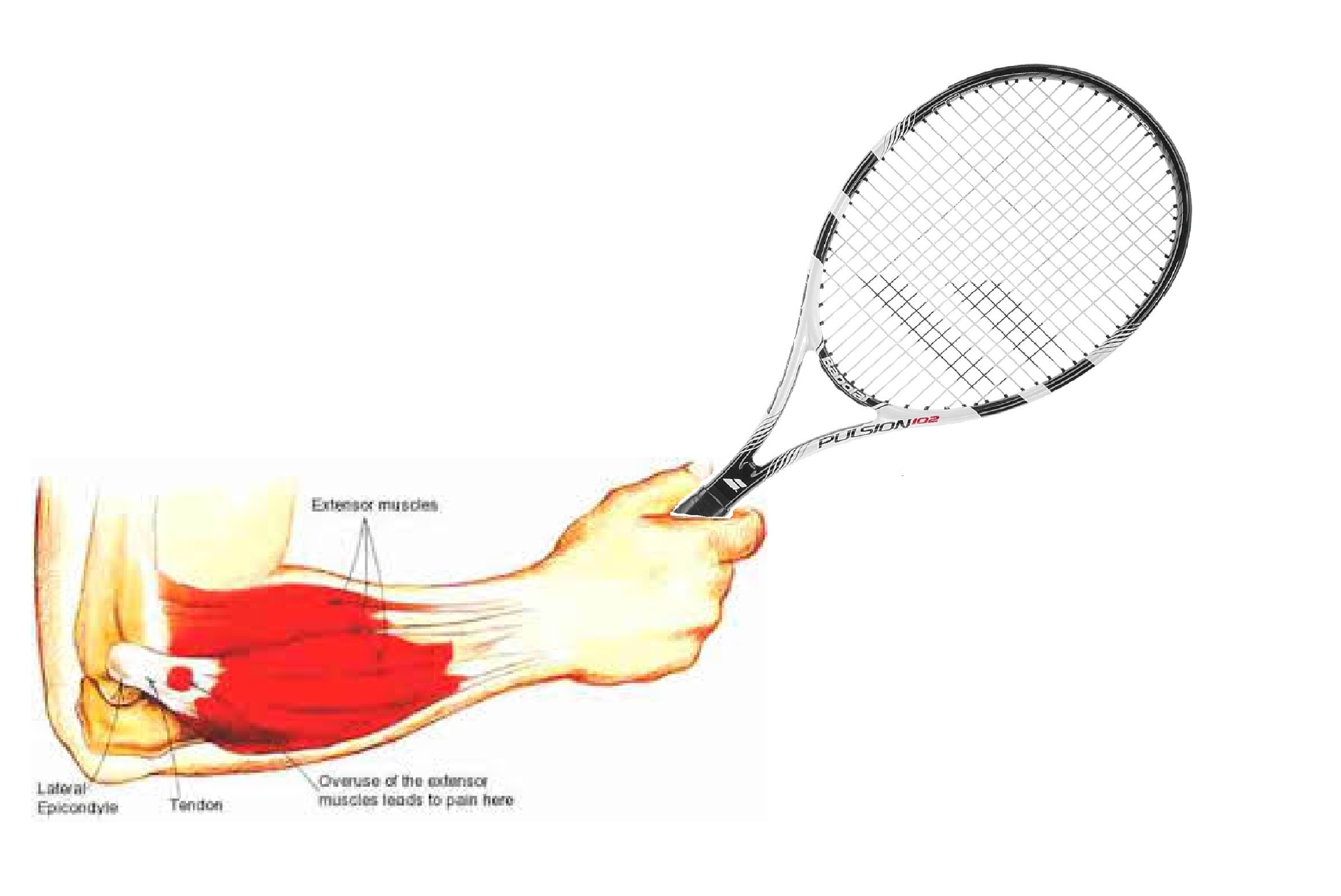What is Tennis Elbow
“Tennis elbow” is a very broad term used to describe pain or discomfort on the outside of the elbow. Pain has often occurred from over use of musculature of the hand, wrist and forearm. The term “tennis elbow” was coined after a high proportion of tennis players developed the condition, as they put the common tendon of the elbow under repeated stress. However, there are many other causes for this condition.
Tennis elbow tends to occur when the muscles and tendons that attach around the outside of the elbow are over-strained. The bony part of the elbow (the lateral epicondyle) is where these muscles and tendons attach, to permit movement of the hand and wrist. The condition is often referred to as “lateral epicondylitis” or “lateral epicondylalgia”.
Tennis elbow most commonly affects people on their dominant side, or the side that is used for repeated gripping, resisting and movement at the wrist. It is possible for the condition to occur in both arms.
Symptoms of Tennis Elbow:
Symptoms vary from person to person, but common presentations include:
- Aching or pain around the area of the lateral epicondyle that slowly develops over time. The onset of pain can also occur quickly, but less commonly
- An ache or pain that is experienced during or after gripping or squeezing objects
- Aching or pain that is worsened by forcefully moving the wrist. Some activities may inclue
- handling kitchen utensils like using a knife to cut firm vegetables
- opening a jar or a door
- turning on the taps
- using carpentry tools or gardening tools that require you to grip or twist
- cleaning windows or painting
Prevalence of Tennis Elbow:
Tennis elbow has been found to affect 1% to 3% of the population and the incidence among tennis players has been extremely high, with up to 50% of tennis players being affected during their careers.
Tennis elbow tends to occur in men more than women and is most commonly present among people between the ages of 30 and 50 years. However, Tennis Elbow can affect people of any age.
Despite being highly prevalent among tennis players, Tennis Elbow may affect anyone who participates in work or leisure activities that involves repetitive use of the elbow, hand and wrist. This is especially so if there is a lot of force during gripping as part of the action.
How to Reduce Pain and Promote Healing of Tennis Elbow:
Some modalities that may help reduce pain include:
- Regular application of ice to the area
- Taping the elbow, as per your Physiotherapist’s instructions
- Taking anti-inflammatories (NSAIDS), in consultation with your GP
- Behaviour modification: Avoiding movements that cause unnecessary pressure or stress through the forearm muscles and elbow
You may be given some specific exercises to stretch and strengthen the muscles and tendons surrounding the elbow and specific movements that you will be advised to avoid. Your recovery may also be assisted with taping of the elbow / forearm or the use of a specific brace fitted by your Physiotherapist.
In some cases, corticosteroid injections can help reduce inflammation if conservative measures aren’t settling the pain adequately.
If you are experiencing symptoms such as these, speak to your physiotherapist about what treatments may benefit you.
This blog was written by our guest blogger Sophie Halsall-McLennan, Fresh Start Physiotherapy

